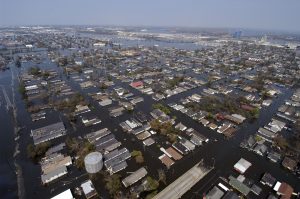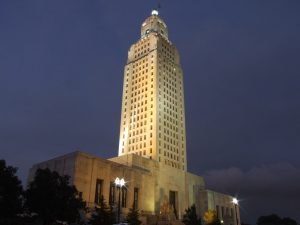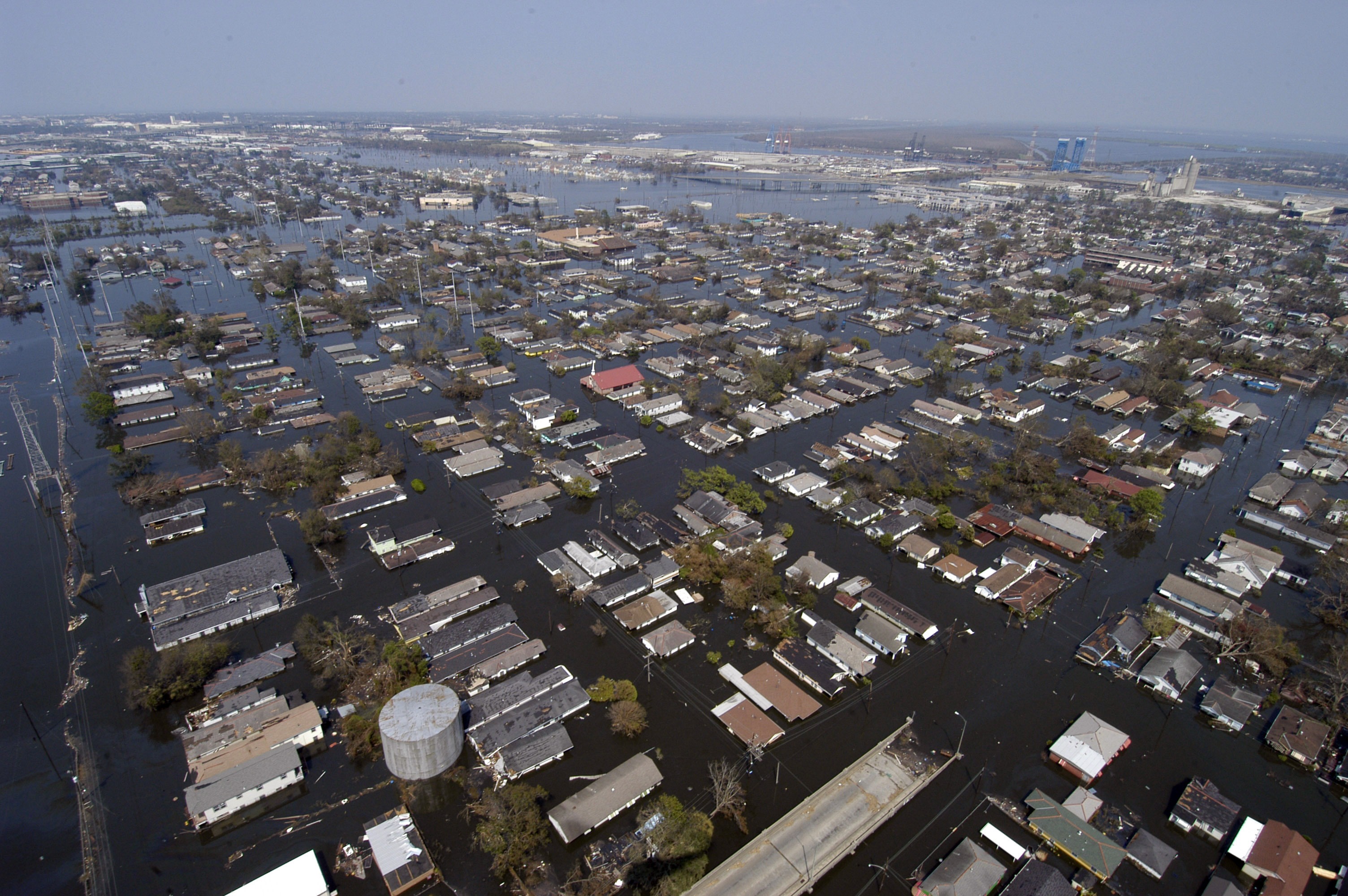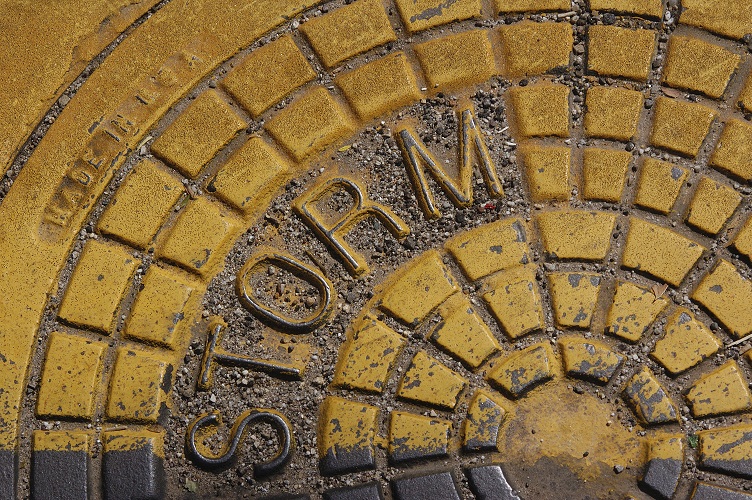When Hurricane Katrina tore across Louisiana in 2005, decimating wide swaths of New Orleans, the region’s vulnerability to flooding from severe storms became a cautionary tale for municipalities around the world. In the years since, local, state, and federal governments have spent more than $20 billion surrounding the city with updated flood control measures, explored cutting-edge stormwater management solutions with the help of international partners, and bolstered the city’s ability to protect its most vulnerable neighborhoods.

Still feeling the effects of heavy storms more than a decade after Hurricane Katrina leveled much of New Orleans, the Louisiana state government recently announced that it will receive a $1.2-billion grant from the U.S. Department of Housing and Urban Development (HUD) to support flood-control projects statewide. Pixabay/labeled for reuse
More than a decade removed from Katrina, however, the region still experiences chronic flooding. Two major storm events in 2016, now known by locals as the Great Floods of 2016, damaged more than 145,000 homes and necessitated an estimated $10 billion in recovery work, according to the U.S. Federal Emergency Management Agency.
In response, Louisiana Gov. John Bel Edwards last year took steps to develop a statewide flood-resilience planning effort known as the Louisiana Watershed Initiative. The U.S. Department of Housing and Urban Development (HUD) recently announced the state will receive $1.2 billion in federal funding to support work under the initiative.
“This news gets us one step closer to making the Louisiana Watershed Initiative’s mission a reality,” Edwards said in a release. “It creates an opportunity to address the root causes of flooding in our state, beginning with those areas devastated by the 2016 floods.”
A statewide plan for flood control
In order to receive the funding from HUD, the Louisiana state government must submit a detailed action plan by Feb. 3, 2020, proposing specific uses for the grant that focus on enhancing flood resilience in the state’s most vulnerable areas. The Louisiana Watershed Initiative posted a draft action plan on its website in late September.

In a statement, Louisiana Gov. John Bel Edwards regarded the funding opportunity as a way “to develop a mutual understanding of risk, increased accountability for decision-making, and a stronger sense of long-term responsibility for Louisiana’s future.” In September, the Edwards administration released a draft action plan detailing how the grant will likely be allocated. Wikimedia Commons
The 91-page plan, open for public comment through Nov. 29, considers existing flood vulnerability in each of Louisiana’s 64 parishes, ways in which climate change might affect those vulnerabilities, and the costs of potential solutions.
“We are refining our action plan, which we began to draft months ago in anticipation of receiving this notice, to meet these parameters while continuing to gather information from stakeholders around the state on how these funds can best be used to reduce flood risk,” said Pat Forbes, executive director of the Louisiana Office of Community Development.
Of the $1.2 billion grant, the Louisiana Watershed Initiative expects to allocate $570 million toward local and regional-scale watershed resilience projects; $328 million toward state-level resilience efforts; and $145 million toward enhanced monitoring, mapping, and modeling capabilities. The remainder will support logistics, including non-federal cost share assistance, administrative costs, and the development of new policies, according to the draft plan.
Funding where it’s needed most
As a condition of the grant, Louisiana will be required to invest at least 50% of received funding in flood mitigation for 10 parishes that historically face the most severe damages from heavy storms. They include:
- Acadia;
- Ascension;
- East Baton Rouge;
- Lafayette;
- Livingston;
- Ouachita;
- Tammany;
- Tangipahoa;
- Vermilion; and
- Washington.
One place to start in these communities, according to the plan, is to establish watershed monitoring infrastructure that can provide real-time, high-quality hydrologic data to inform site-specific interventions. The data, along with greater collaboration between communities that share watersheds, can help support a statewide public education and outreach campaign and demand for green infrastructure.
The funding originates from HUD’s Community Development Block Grant Program, an initiative that focuses on building resilience in at-risk communities. As Louisiana prepares to receive its grant, similar efforts are underway in California, Florida, Georgia, Missouri, North Carolina, South Carolina, Texas, and West Virginia. All told, HUD will allocate nearly $7 billion during its latest round of Community Development Block grants to support flood-protection efforts.
Learn more about the Louisiana Watershed Initiative at its website.






